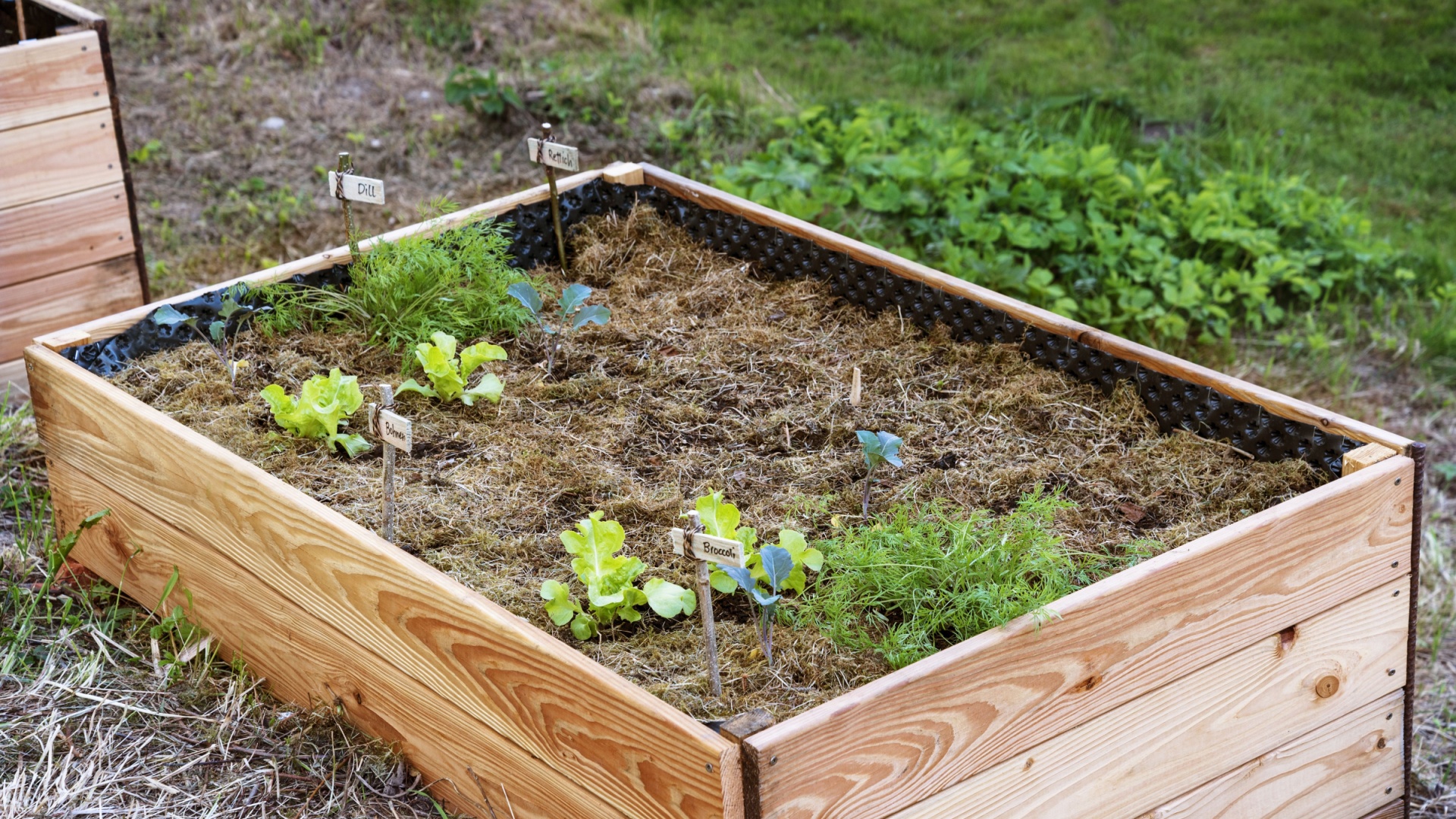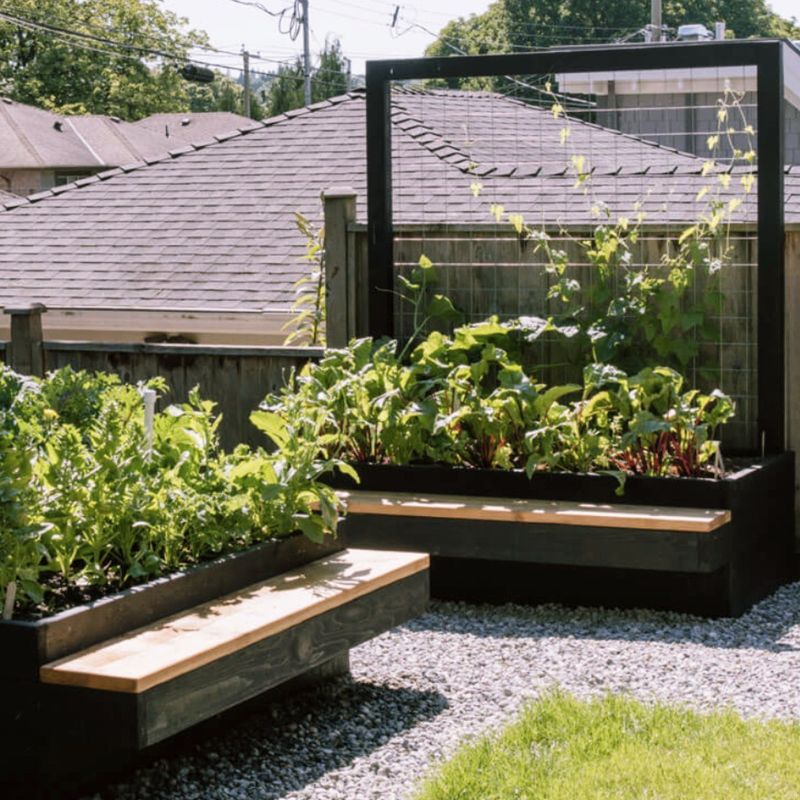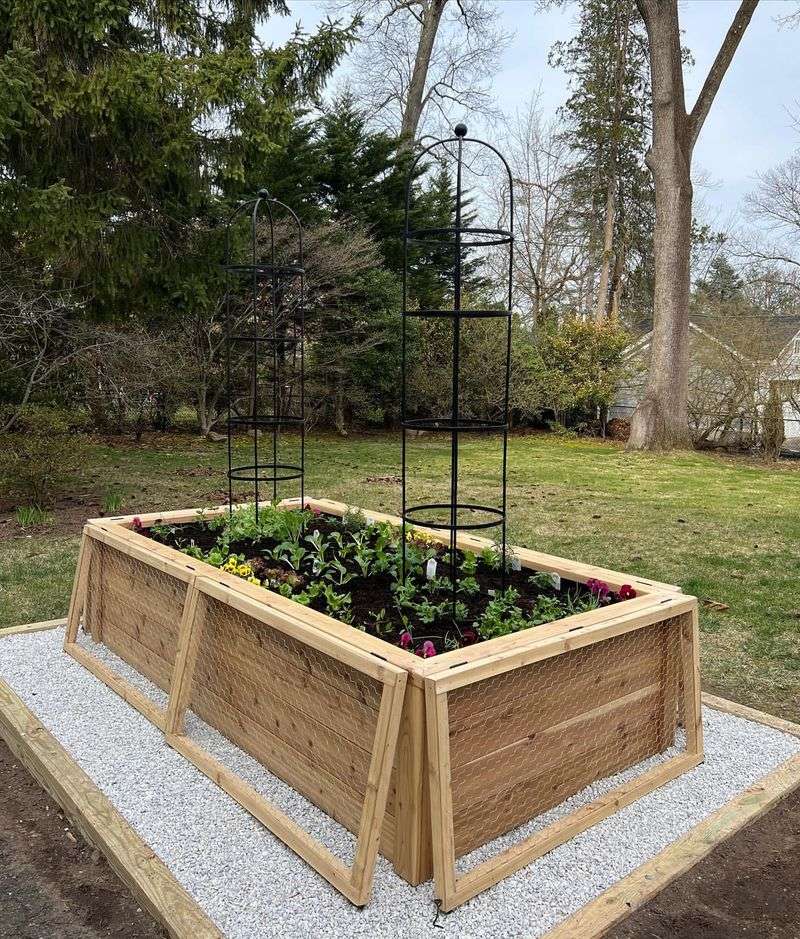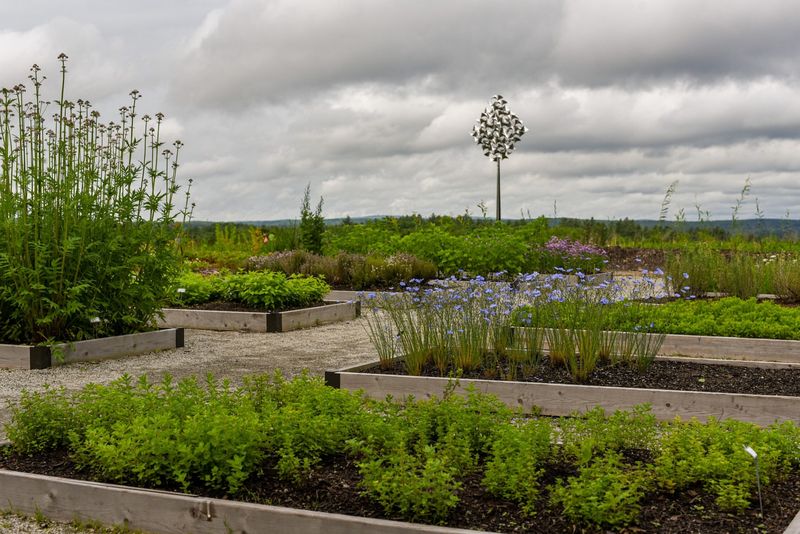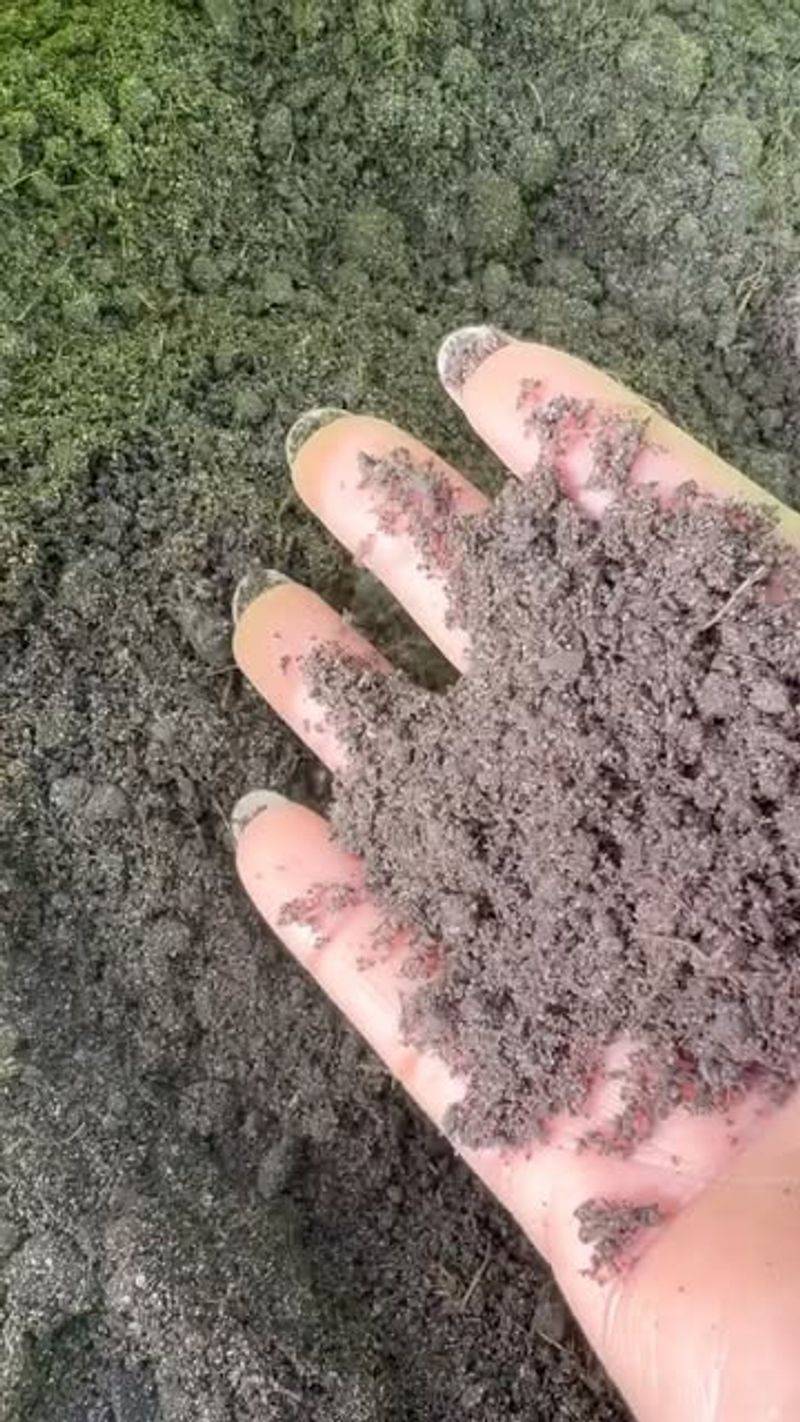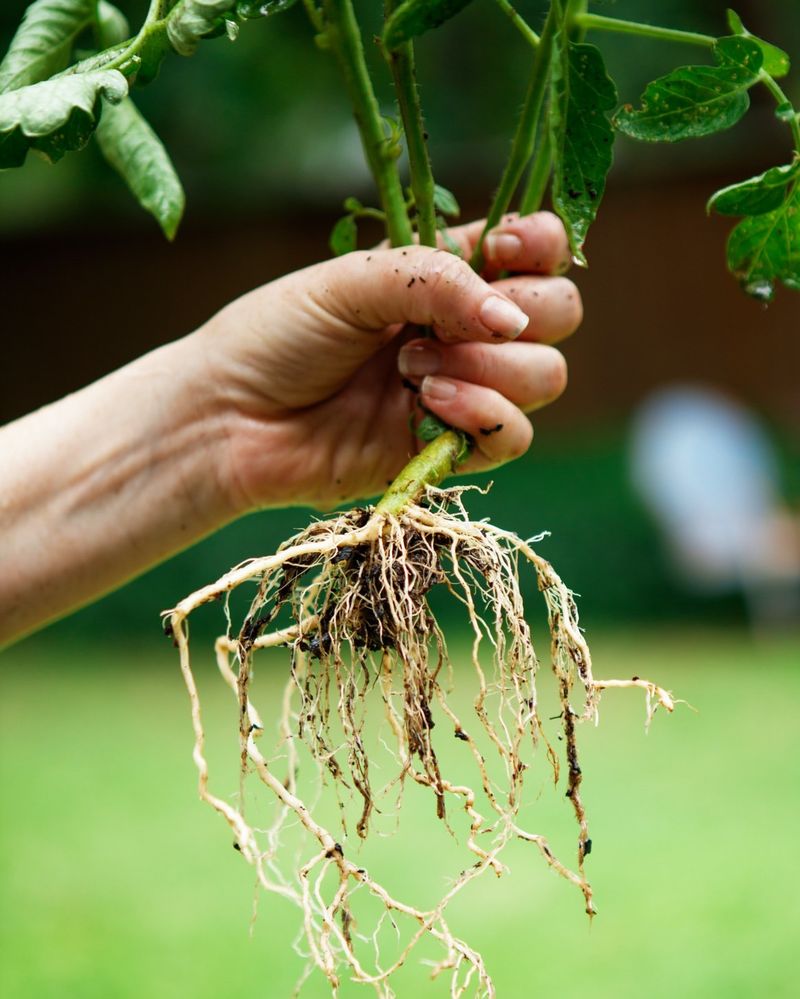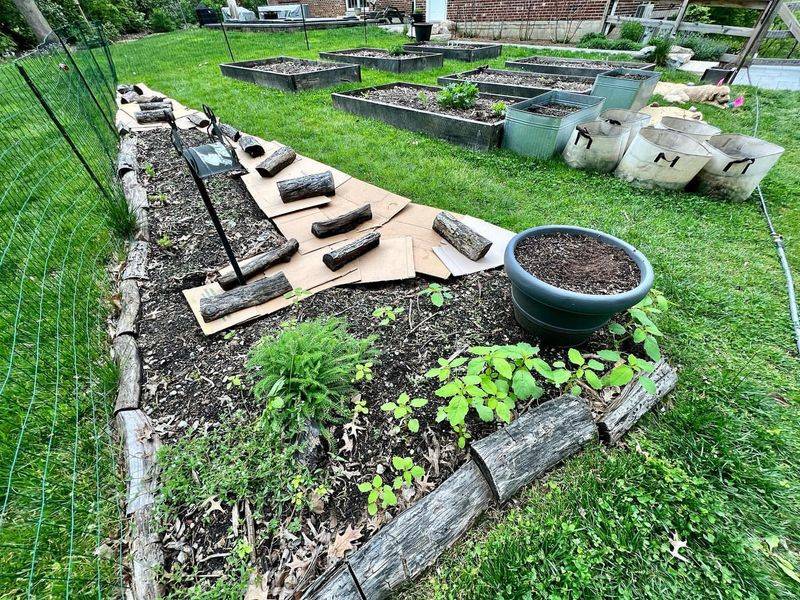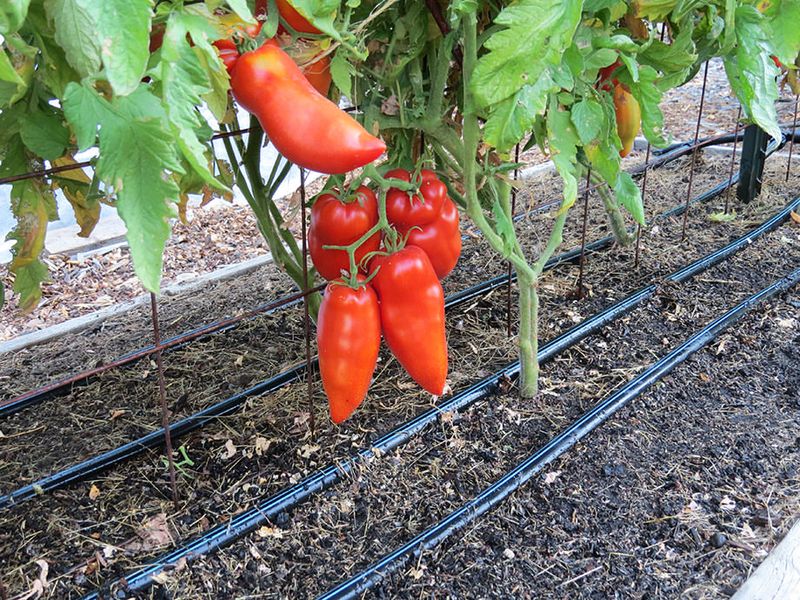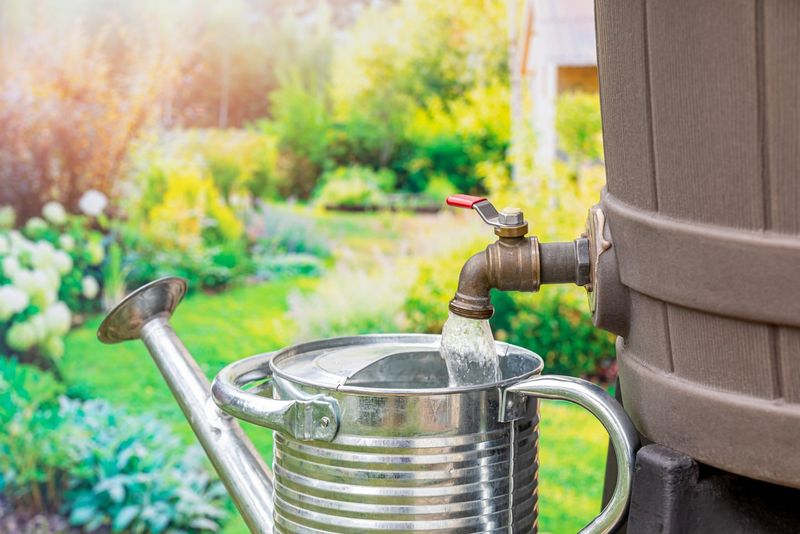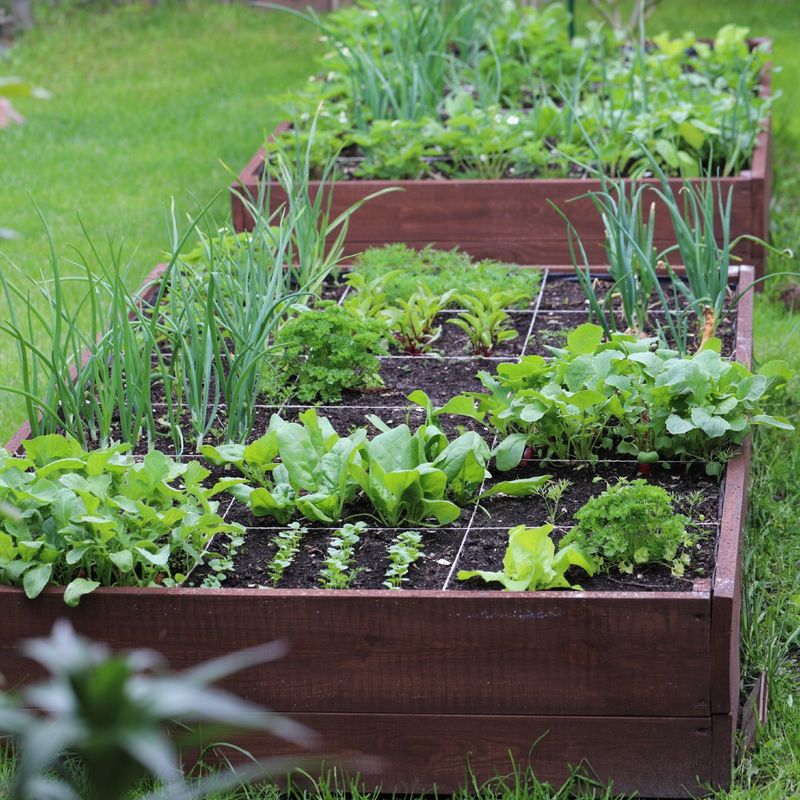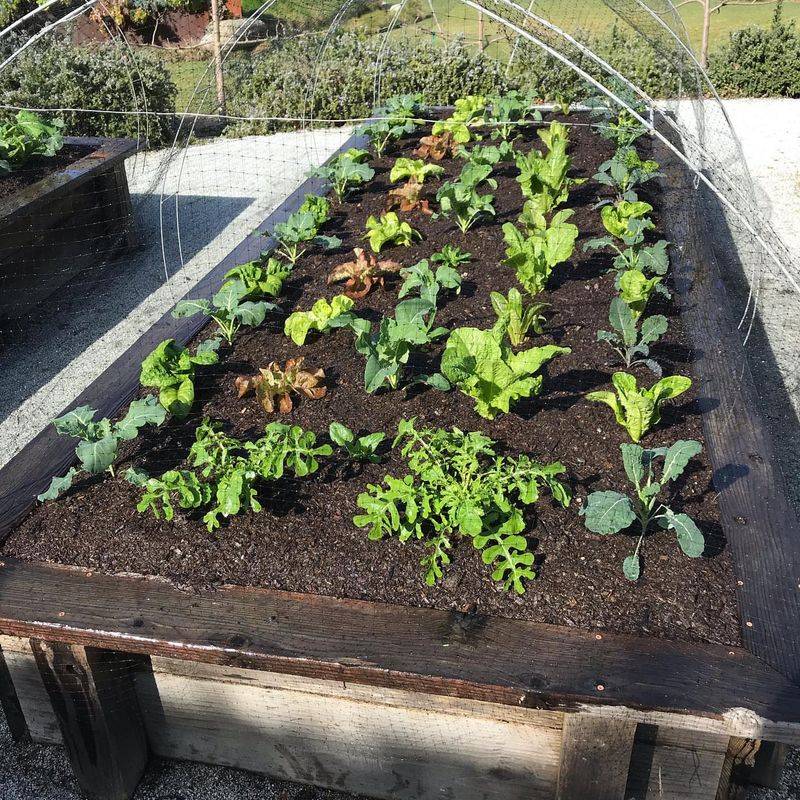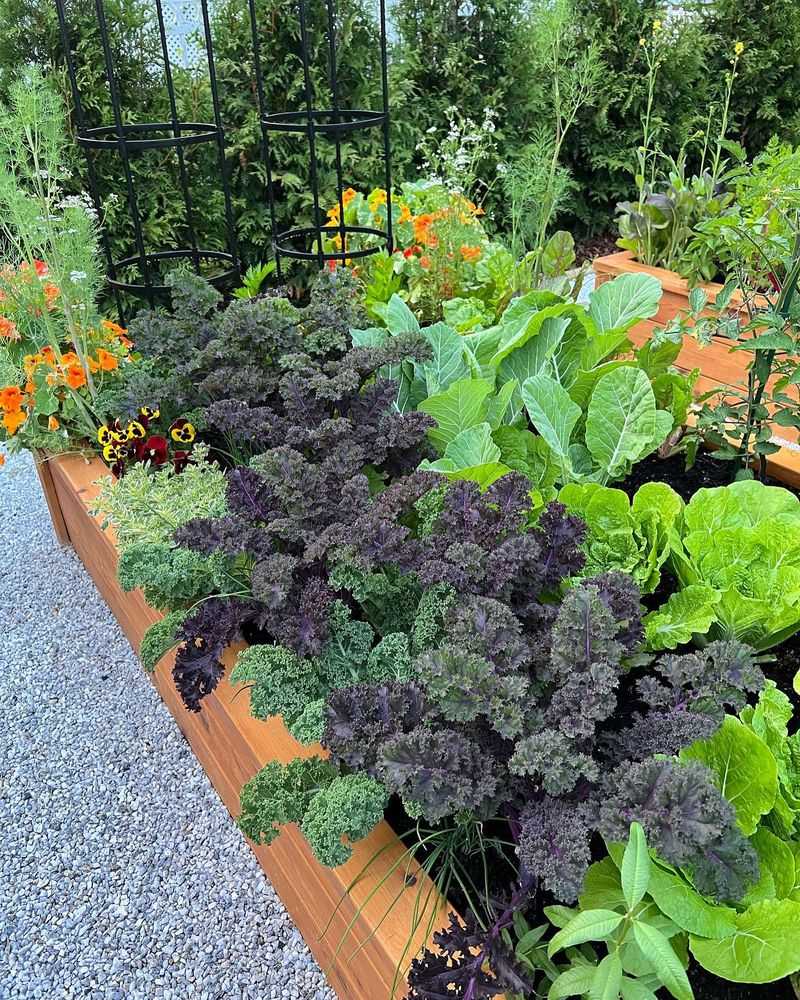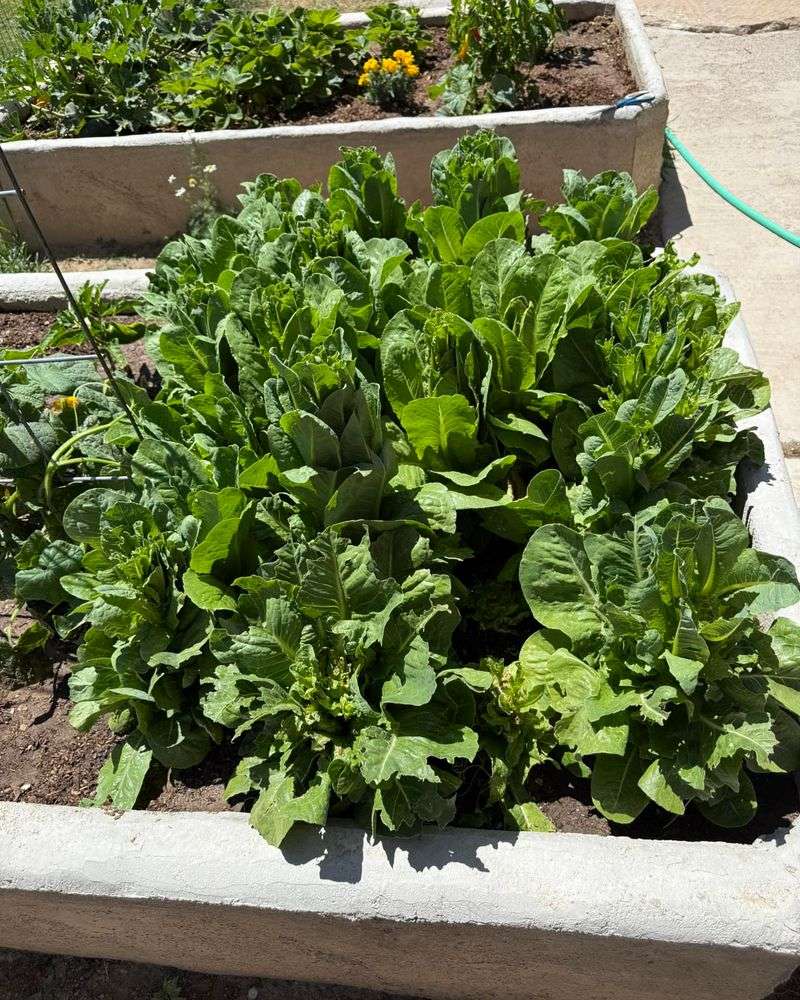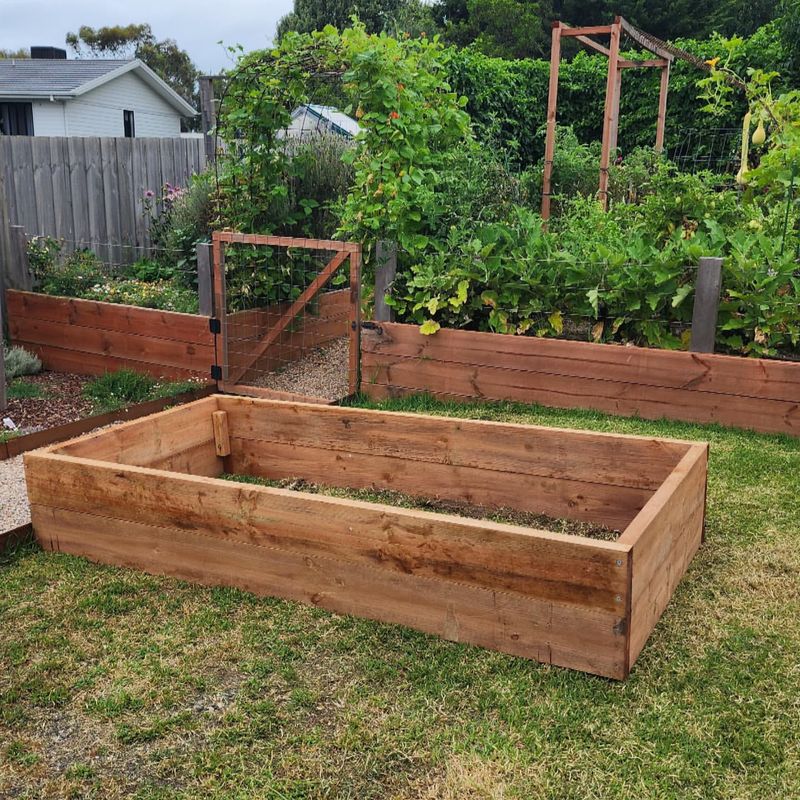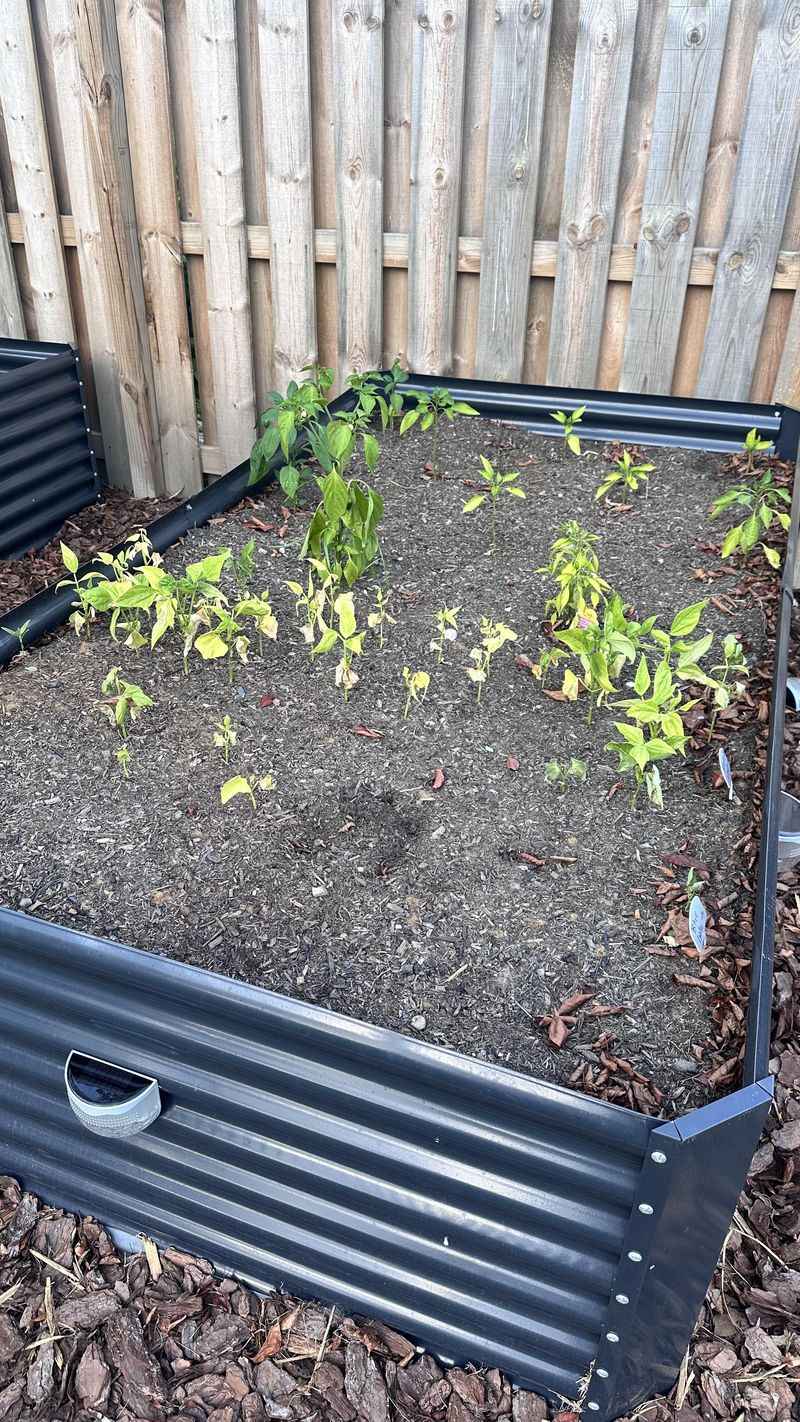Noticing your raised beds drying out faster than usual? You’re not imagining it. Utah’s late-summer sun, dry air, and increased plant growth are pulling moisture from your soil quicker than your watering can can keep up.
If your garden’s suddenly struggling, it’s time to understand what’s behind the rapid dry-out—and what you can do to keep your beds thriving through the heat.
1. Rising Summer Temperatures
Utah’s thermometer has been climbing steadily this month, with temperatures regularly hitting the 90s and even triple digits in some areas. Heat accelerates evaporation from soil surfaces, pulling moisture away from plant roots faster than usual.
The raised bed structure actually warms up more quickly than in-ground gardens because air circulates around all sides of the bed. Think of it like a coffee mug cooling faster than a thermos—more exposed surface area means faster moisture loss.
2. Lower Humidity Levels
Utah’s famous dry air feels especially parched this month. When humidity drops, the atmosphere becomes like a sponge, eagerly pulling moisture from any available source—including your garden soil.
Raised beds expose more soil surface to this dry air than traditional gardens. The scientific term is ‘vapor pressure deficit’—basically, the drier the air, the more aggressively it pulls water from plants and soil. Your garden is literally losing water to the thirsty atmosphere.
3. Increased Wind Exposure
Have you noticed more breezy days lately? Utah’s mountain-valley geography creates wind patterns that intensify during seasonal transitions. Wind acts like an invisible hair dryer, whisking away moisture from soil surfaces before it can sink deeper.
Raised beds sit higher than ground level, catching more of these drying breezes. The elevated position that provides good drainage during wet periods becomes a disadvantage when winds pick up, as the entire bed becomes exposed to these moisture-robbing currents.
4. Soil Composition Changes
Many Utah gardeners fill raised beds with commercial potting mixes that contain peat moss, coconut coir, or composted bark. While these ingredients create fluffy, root-friendly environments, they tend to dry out much faster than native soil.
Over time, these organic materials break down and compact, changing how they hold water. What worked perfectly last year might now drain too quickly as the decomposition process continues. The lightweight, airy soil that makes raised beds so appealing also makes them more vulnerable to rapid moisture loss.
5. Maturing Plant Root Systems
Your garden plants aren’t babies anymore! As plants grow larger, their root systems expand dramatically, forming complex networks throughout the soil. These developing roots drink up available moisture at an increasing rate.
A single tomato plant can extract several gallons of water per week during peak growth. When multiple thirsty plants share a raised bed, they compete for available moisture, creating dry pockets throughout the soil. The confined space of raised beds intensifies this competition compared to traditional gardens.
6. Exposed Bed Sides
Unlike in-ground gardens, raised beds have walls exposed to air and sunshine. These wooden, metal, or composite sides absorb heat throughout the day, especially in Utah’s intense mountain sunlight.
The materials then radiate this stored heat into the soil, creating a warm perimeter around your garden. Wood beds warm less than metal ones, but all types create a microclimate effect. The soil nearest the edges often dries first, and the effect moves gradually inward like a slowly shrinking puddle.
7. Insufficient Mulch Layer
Mulch acts like a garden’s sunscreen and water-saving blanket. Many Utah gardeners remove spring mulch as temperatures warm but forget to replace it with summer-appropriate materials.
Without protective covering, soil moisture evaporates directly into the air. A good 2-3 inch layer of organic mulch can reduce watering needs by up to 50%. Straw, shredded leaves, or wood chips create a barrier against Utah’s drying sun and wind while gradually feeding the soil as they decompose.
8. Irrigation System Problems
Drip systems and soaker hoses often work perfectly in spring but develop issues as summer progresses. Utah’s hard water leaves mineral deposits that clog emitters, while exposure to UV light degrades plastic components.
What looks like adequate watering might actually be delivering much less moisture than your plants need. Check for kinked hoses, clogged drippers, or broken connections. Many gardeners are surprised to discover their irrigation system is only delivering a fraction of the expected water volume after a few months of operation.
9. Seasonal Water Restrictions
Many Utah communities implement watering restrictions as reservoir levels drop during summer months. These rules might limit garden watering to specific days or times, often when evaporation rates are highest.
Raised beds can’t access groundwater like in-ground gardens, making them completely dependent on what you provide. When restrictions force watering during midday hours, much moisture is lost to evaporation before plants can use it. Some municipalities have reduced water pressure during peak hours, further complicating garden irrigation.
10. Increased Pest Activity
Utah’s warming climate has extended the active season for many garden pests. Aphids, spider mites, and other sap-sucking insects literally drink from your plants, causing them to lose moisture faster and wilt even when soil seems adequately damp.
These tiny moisture vampires reproduce rapidly in hot weather. A single female spider mite can produce thousands of descendants in just weeks! The stress from pest feeding makes plants more vulnerable to drought, creating a vicious cycle where water-stressed plants attract even more pests.
11. Longer Daylight Hours
June in Utah brings nearly 15 hours of daylight, exposing your garden to more solar radiation than any other time of year. This extended light drives photosynthesis but also increases transpiration—the plant equivalent of sweating.
Plants release moisture through tiny pores called stomata throughout the daylight hours. Longer days mean more hours of water loss through this natural process. The extended photoperiod pushes plants to grow faster, requiring more water to support this accelerated development in raised bed environments.
12. Compact Planting Techniques
Many Utah gardeners use intensive planting methods in raised beds, spacing plants closer than traditional row gardens. While this maximizes harvest in limited space, it creates a higher demand for water per square foot.
The combined leaf surface in a densely planted bed can transpire gallons of water daily. Think of each leaf as a tiny evaporation panel—more leaves mean more moisture pulled from the soil. The efficient drainage of raised beds becomes a disadvantage as these thirsty plant communities quickly deplete available moisture.
13. Uneven Rainfall Patterns
Utah’s summer precipitation often comes as brief, intense thunderstorms rather than gentle, soaking rain. These cloudbursts can drop significant amounts of water in minutes, overwhelming raised beds’ absorption capacity.
Much of this sudden rainfall runs off before penetrating deeply into the soil. The excellent drainage that prevents root rot in spring becomes problematic when water exits too quickly. Weather data shows Utah’s rainfall pattern has become more erratic, with longer dry periods between more intense storms.
14. Bed Material Degradation
Wood, the most common raised bed material in Utah, naturally degrades over time. As wooden sides age, they develop tiny cracks and separations that allow soil moisture to escape through the walls themselves.
These miniature vents become more pronounced during hot weather as wood expands and contracts. Older beds may lose significant moisture through deteriorating sides before plants can access it. Metal beds conduct heat directly into the soil, while some composite materials can wick moisture outward like a paper towel.
15. Soil Hydrophobia Development
Counterintuitively, extremely dry soil actually repels water rather than absorbing it. This condition, called hydrophobia, develops when organic particles become completely dehydrated under Utah’s intense summer sun.
Water beads up and runs off instead of soaking in, creating the frustrating situation where you water thoroughly yet the soil remains dry just an inch below the surface. The potting soils commonly used in raised beds are particularly prone to this condition once they dry out completely.

